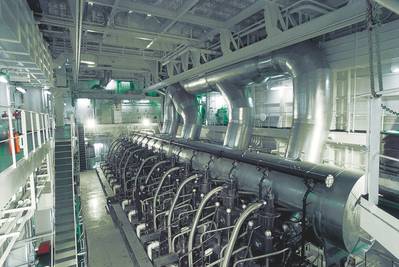Preparing for Low Sulphur Operation
Stricter limitations on sulphur emissions (SOx) will pose many challenges to ships operating in Emission Control Areas (ECAs). If not handled with care, switching from Heavy Fuel Oil to Marine Gas Oil can put equipment at risk and increase operational costs. In the new publication “Sulphur Limits 2015 – Guidelines to ensure Compliance”, DNV GL experts provide a general overview the regulatory background, describe potential difficulties associated with the fuel change-over procedure and discuss which technologies can best help vessels fulfil the new requirements. Furthermore, DNV GL has developed a ship-specific Fuel Change-Over Calculator (FCO) to help shipowners and operators determine the ideal parameters for their vessel’s fuel change-over.
Ships operating in an ECA will have to use fuel that does not contain more than 0.10% sulphur (MARPOL Annex VI) from 1st January onwards. Switching to Marine Gas Oil (MGO) is currently the most viable option for following the new threshold limit. This may appear to be a simple task, but the change-over procedure actually requires significant attention from crews during operation as well as extensive on-board preparations before the entry into force date.
“Taking into account variables such as a vessel’s fuel system layout, any constraints on temperature and the variable sulphur content of fuels, the FCO Calculator can significantly reduce the risk of human error during the preparation of the change-over process,” says Jörg Lampe, Senior Project Engineer Risk & Safety, Systems Engineering at DNV GL. The software uses a complex numerical simulation that is more accurate than previous linear models and delivers insight into the optimised lead time for the change-over process, its costs and the maximum hourly consumption to meet constraints. “This kind of data ensures a cost-efficient, reliable fuel change-over and can also help demonstrate compliance for the respective authorities,” Lampe adds.
Factors such as the temperature and viscosity of the two fuels as well potential incompatibilities are critical to performing the change-over procedure successfully. As HFO’s and MGO’s operating temperature differs by about 100 degrees Celsius, the change-over may cause a rapid fall in temperature and increase the danger of thermal shock to the equipment. Fuel systems also have to account for their difference in viscosity during operation, in order to avoid fuel pump failures and leakages. The fact that HFO and MGO are mixed in all ratios during the change-over procedure increases the risk of the fuels becoming incompatible. This may clog filters, causing the engine to shut down.
Such complications can be avoided by preparing detailed guidelines for the fuel change-over, training crews to take a measured and careful approach to the procedure and by making informed decisions about the capabilities of a vessel.
DNV GL’s fuel change-over calculator can provide customers with the basis for these informed decisions – supplying them with the ideal parameters for the change-over procedures on board their vessels. The publication “Sulphur Limits 2015 – Guidelines to ensure Compliance” is available for download on the DNV GL website.












